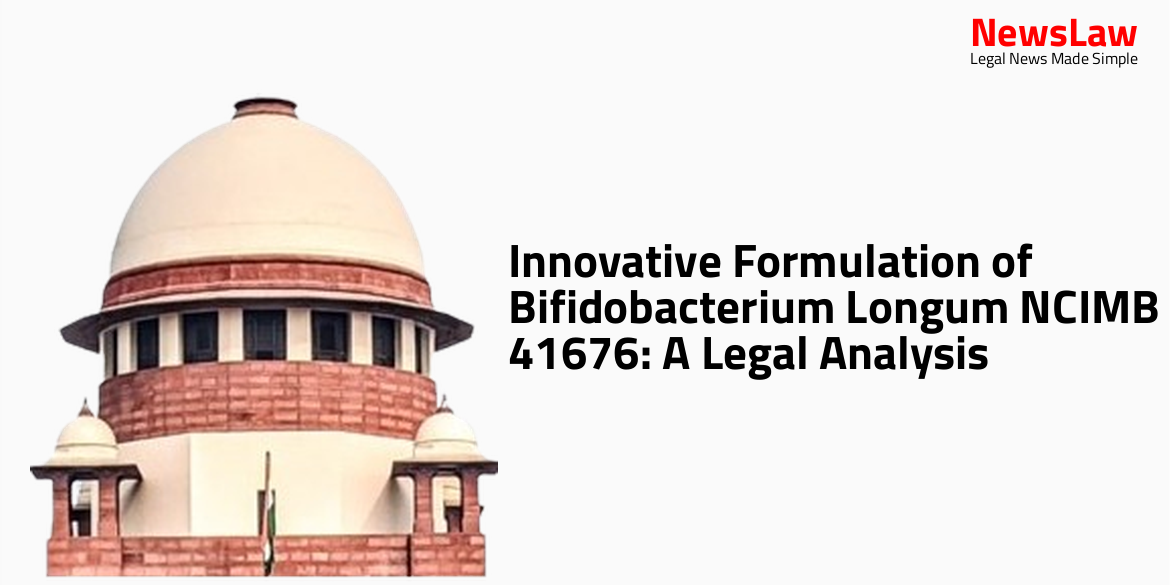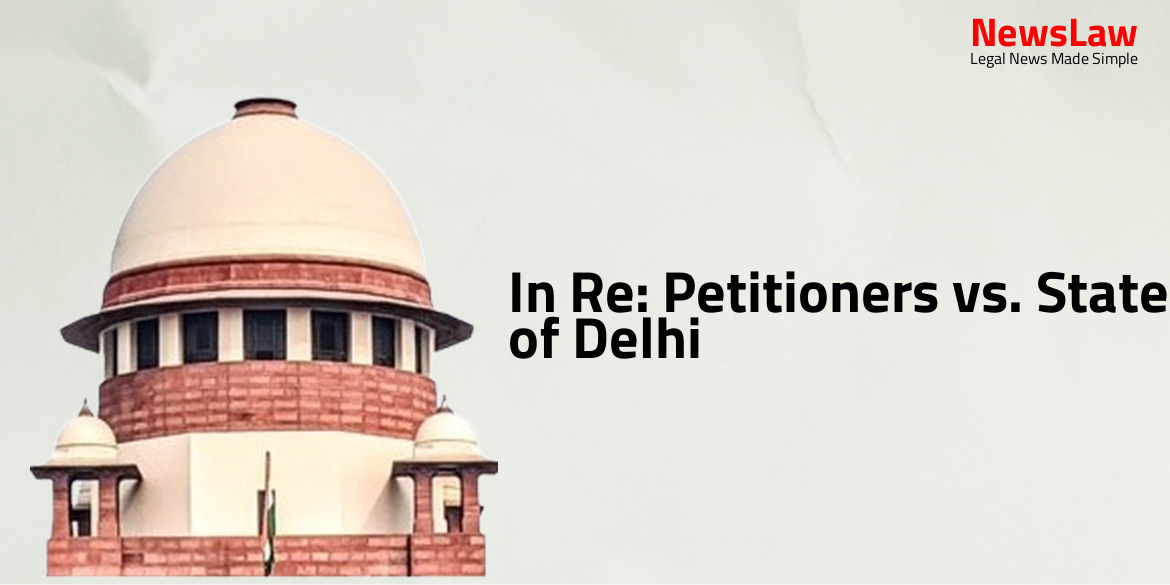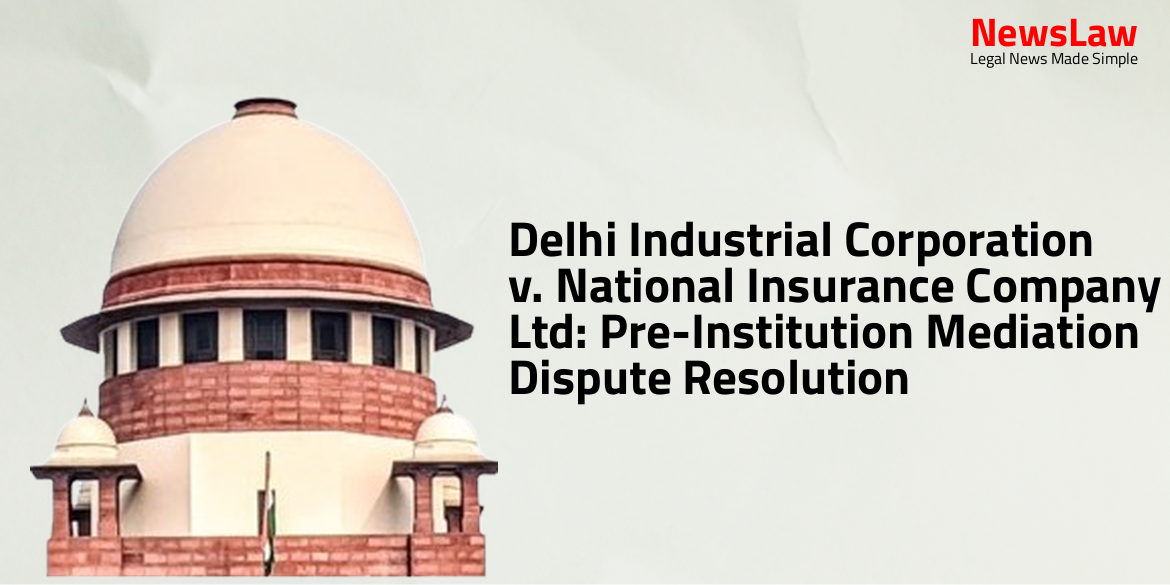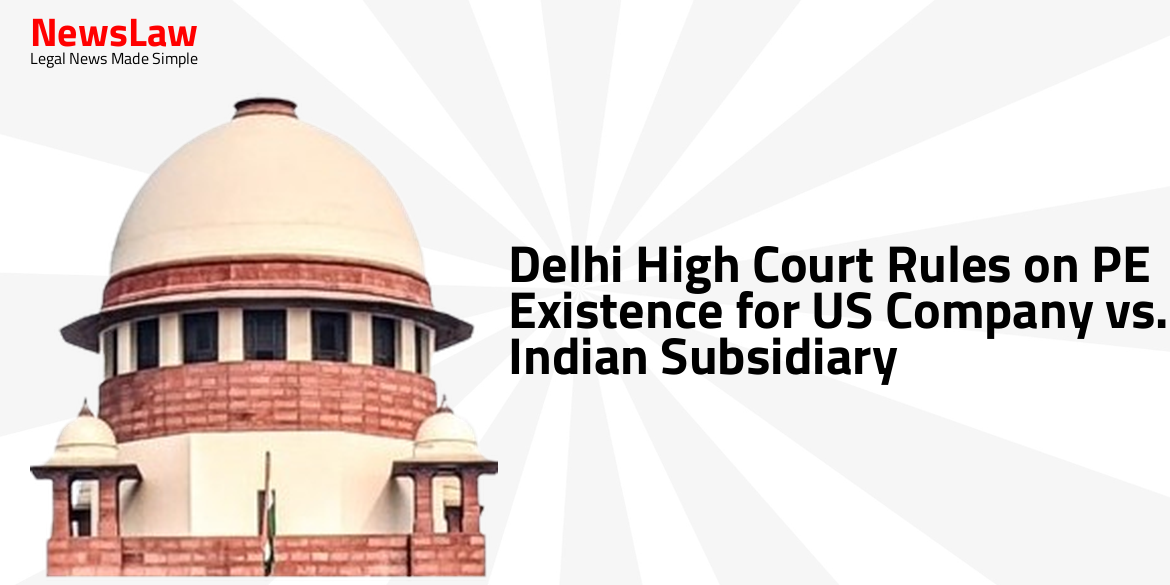Exploring the legal intricacies of an innovative formulation of Bifidobacterium Longum NCIMB 41676, the recent judgment by the Delhi High Court has implications for intellectual property rights. Stay informed on the groundbreaking case in our blog post.
Facts
- The applicant filed amended claims referencing a formulation of Bifidobacterium longum strain NCIMB 41676.
- The claims were limited to 13 from the original 38.
- The claims were considered non-patentable under Section 3(d) as they claimed a new use for a known microorganism.
- The Appellant provided responses to objections but they were not found persuasive due to prior art advocating the health benefits of probiotics like Bifidobacterium.
- The invention lacked inventive step as skilled artisans could easily isolate different strains of microorganisms and formulate probiotics.
- Efforts were made to revise the principal claim to strengthen patentability, but the application was ultimately denied under Section 15 of the Act.
Issue
- The issue of whether a patent can be granted for an invention relating to a method of enhancing the taste of water with certain minerals found naturally in the Himalayan region was raised
- The key point of contention was whether the invention involved a non-obvious inventive step, as required by the Patents Act
- The court analyzed the inventive step of the invention in the context of prior art and existing knowledge in the field
- The court considered the blend of minerals in the invention to determine its uniqueness and inventive concept
- Ultimately, the court determined that the invention satisfied the criteria of non-obviousness and was eligible for a patent under the Patents Act
Arguments
- The Respondent disregarded the experimental data establishing the technical advancement of Bifidobacterium longum NCIMB 41676 (AH 1714) over other strains.
- The Respondent failed to consider the novelty and formulation comprising the strain, which do not fall under sections 3(c), 3(d, or 3(e) of the Act.
- Reference is made to the decision of the Intellectual Property Appellate Board in the matter of Arthritis Relief Plus Ltd. v. Controller of Patents and Designs.
- The Respondent made a critical error in the appreciation of facts by overlooking crucial aspects.
- Respondent failed to acknowledge inventiveness of the formulation comprising the said strain.
- CGSC argued that the elements in the patent application are obvious to a person skilled in the art.
- Application refused due to lack of inventive step despite acknowledgment of patentability under Section 3(e).
- Contradictory stance in the evaluation presented by the Respondent.
Analysis
- Controller of Patents referenced prior art documents D1 – D5 to conclude lack of inventive step in subject application.
- Controller considers strain NCIMB 41676 and specific formulation claimed in Claim 1 for novelty.
- Emphasis on novel characteristics of strain, its biotherapeutic and immunomodulatory properties.
- Appellant narrowed claims from strain to formulation, raising questions on novelty and uniqueness.
- Prior art documents show different secretion patterns for certain cytokines compared to appellant’s strain.
- Mere presence of elements in prior art does not conclusively establish obviousness.
- Appellant claims strain provides significant therapeutic advancements over prior art.
- Evaluation of inventive step focuses on unique immunomodulatory effects of strain.
- Different strains of Bifidobacterium longum have diverse functional roles and applications.
- Prior art reveals variability in strains’ ability to modulate cytokine production.
- Objective analysis of inventive step crucial to foster genuine innovation and prevent trivial enhancements.
- Inventive step involves non-obvious conceptual leap, not deducible by skilled practitioner.
- Court emphasizes need for fresh examination to decide on grant or refusal of patent application.
- Appellant’s formulation with unique cytokine modulation shows enhanced efficacy compared to prior art.
- Differentiation in immune response capabilities supports contention of technical advancement.
- Prior art lacks detailed analysis of distinctive features or enhanced efficacy of appellant’s formulation.
- Controller’s decision to reject application deemed untenable due to lack of thorough analysis.
- In the specific part of the judgment, the court emphasizes the importance of the application of mind and the recording of reasons as fundamental elements of natural justice, especially in the context of rejecting patent applications.
- The court references the Supreme Court’s ruling in Manohar v. State of Maharashtra & Ors. to highlight the necessity of addressing three crucial aspects: disclosures of prior art, the invention claimed in the current application, and the reasoning behind why the claimed invention would be obvious to a person skilled in the art based on the prior art.
- The judgment points out the shortcomings in the present case against the backdrop of Section 2(1)(ja) of the Patent Act 1970, which defines an ‘inventive step’ as a feature that not only represents a technical advance over existing knowledge or has economic significance but is also non-obvious to a person skilled in the field.
- For the analysis on inventive steps, the decisions of the Supreme Court in cases like Biswanath Prasad Radhey Shyam v. Hindustan Metal Industries Ltd., Hoffmann-La Roche Ltd & Anr. v. Cipla Ltd., F.Hoffmann-La Roche Ltd & Anr. v. Cipla Ltd., and Enercon India Ltd. v. Aloys Wobben are considered foundational.
- Comparative analysis of prosecution histories in relevant jurisdictions is necessary for reassessment of the patent application.
- Grant of corresponding patents in the US and EPO has been relied upon by the Appellant.
- Ensuring that specific issues overlooked or misinterpreted initially by the Controller are thoroughly addressed through this comparative analysis.
Decision
- The patent application for the subject patent is restored to its original number.
- Prior to deciding the matter afresh, Appellant shall be granted a hearing, and the notice of such hearing must clearly delineate the objection(s).
- The Controller is directed to render the final decision within a period of four months from the date of conclusion of the hearing.
Case Title: ALIMENTARY HEALTH LIMITED Vs. CONTROLLER OF PATENTS AND DESIGNS (2024:DHC:3920)
Case Number: C.A.(COMM.IPD-PAT)-458/2022



